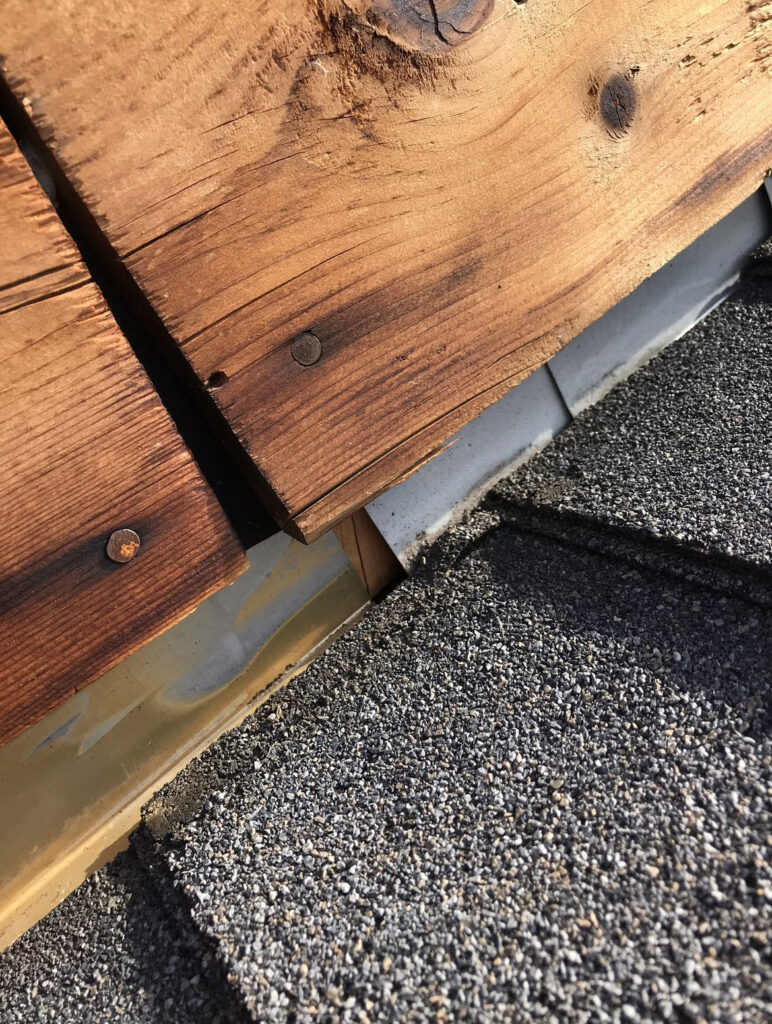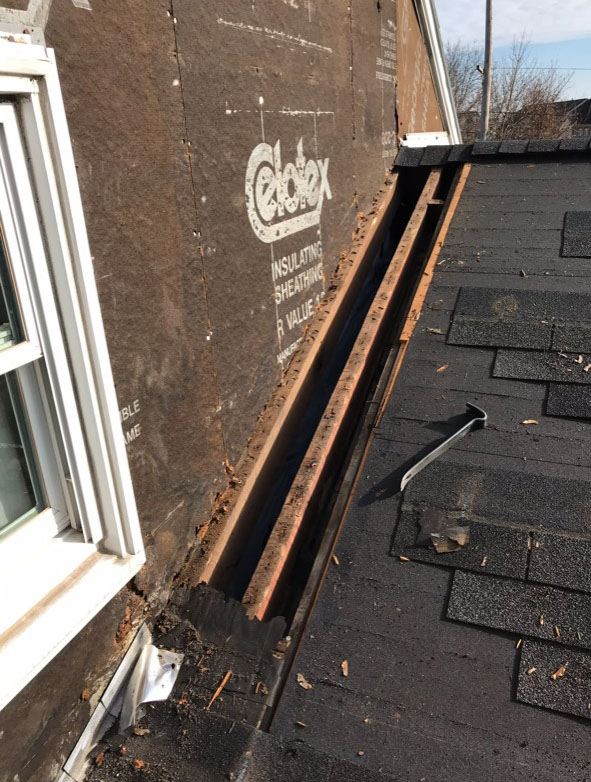Roof flashing is a material used to seal the joints and seams on a roof. It is typically made of metal, plastic, or rubber. Flashing is installed around the edges of the roof, where it meets other surfaces, such as walls, chimneys, and vents. It also goes around the edges of skylights and other openings in the roof.
Flashing helps to prevent water from leaking into the home. It also helps to prevent ice dams from forming. Ice dams are a common problem in cold climates, where water freezes on the roof and then melts. The melting water can then refreeze, causing damage to the roof and the home.
Flashing is an important part of roof maintenance. It should be inspected regularly and repaired or replaced as needed.



Storm Damage
Roof flashing gets damaged from storms in several ways.
- High winds: Strong winds can tear or lift the flashing away from the roof.
- Heavy rain: Heavy rain can saturate the flashing and cause it to leak.
- Hail: Hail can damage the flashing by denting it or breaking it.
- Debris: Debris from storms, such as tree limbs or shingles, can damage the flashing.
When the flashing is damaged, it can cause water leaks into the home. The water can leak into the attic, the walls, or even the foundation. If the water leaks are not repaired, they can cause serious damage to the home.
It is important to inspect the flashing after a storm to see if it has been damaged. If the flashing is damaged, it should be repaired as soon as possible.
Repairs
When we do flashing repairs, typically the flashing that was never installed from the builder is called kickout flashing. It is found at the bottom of the roof line where the gutter meets the wall of the home. Kickout flashing helps divert water into the gutter, instead of water flowing down the wall behind the siding or stucco.
Another kind of flashing is called step flashing. This type of flashing is typically used when the builder did not step-flash an area correctly. We would open the existing step flashing area and re-step flash it. This involves removing shingles and typically vinyl siding and then reapplying the flashing after it is done.
Sometimes a dormer on the house will not be flashed properly. In this case, we would open up the shingles and siding at the bottom corner of the dormer and flash it properly so water does not drip inside the inside corner of the house.
